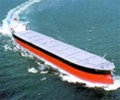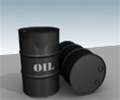Depressed rates weaken VLCC market, force owners to idle ships

The VLCC market is stuck in limbo with spot rates for hauling crude from the Middle East to Far East staying almost static since the beginning of 2021, forcing owners to idle and lay-up ships to cut losses.
The first half of the year saw rates for the benchmark Persian Gulf to China 270,000 mt route hovering in the Worldscale 31.5 to w33 range, according to S&P Global Platts data. This was despite delivered marine fuel 0.5% bunker prices witnessing a jump from mid-$400/mt to mid-$500/mt levels in Singapore on the back of a crude price rally.
“VLCC spot earnings averaged just $500/day on the benchmark trade during the first half of this year on slow steaming, non-scrubber, non-ECO basis; marking the lowest half-yearly result since our records began in 2000,” Gibson Shipbrokers said in a recent market report.
A surplus tonnage supply along with tepid loading demand has taken a toll on the health of the VLCC market, where owners were finding it difficult to transfer the higher bunker costs to charterers as the supply of ships was outweighing the loading demand.
Owners idle ships
While some owners were forced to undertake low freight levels just to keep their vessels in a moving mode, a few others were opting to idle their non-eco, or less fuel-efficient, ships around the waters of Singapore to prevent further expenses.
According to market sources, shipowners AMCL and Cosco have decided to keep a total 12 non-eco VLCCs in hot lay-up until the freight market sees some improvement.
Cosco and AMCL were not immediately available to comment on their moves.
Laying-up of a ship involves temporarily idling and removing it from commercial operation. There are two types of lay-ups — hot and cold. Ships are kept out of service in the hot lay-up and can be mobilized into trading at a short notice, while during cold lay-up, the ship is anchored at a safe place with its engines switched off.
“It is nothing new for owners to lay-up the vessels nowadays. The vessels idling without cargo in Singapore, Galle and Fujairah can be considered as lay-up as they will move only if the freight market is improving,” said a VLCC broker.
“The key point is till what level those owners find it profitable to return to the spot market,” the source added.
Some market sources doubt that keeping a small number of ships away from the market could help bolster the freight rates.
“It will do little to alleviate the surplus supply in the market. There are still a lot of ships out there,” a chartering source said, adding that any small increases in the freight levels were just the normal fluctuation and did not suggest any recovery.
“Not every owner is idling their ships like Cosco and AMCL. Some owners [have to keep] their vessel running. Currently, the freight spread between ex-drydock and modern ships with SIRE [Ship Inspection Report Programme] is very narrow, which is encouraging charterers to take more modern ships [instead],” a VLCC owner said.
China crude destocking
The lukewarm crude demand from China, the world’s largest oil importer, also hit the VLCC owners.
The spike in crude prices has prompted Chinese refineries to draw down from its inventories that were built when the prices were lower in H1 2020 and this was limiting Beijing’s crude imports.
China’s crude oil imports during H1 2021 declined for the first time in eight years and the crude inventory fell to a 14-month low of 879.46 million barrels in June, Platts earlier reported.
This partly explained the weakness in freight market even after an increase in crude supply from the OPEC+ alliance.
Source: Platts

 Hellenic Shipping News Worldwide Hellenic Shipping News Worldwide, Online Daily Newspaper on Hellenic and International Shipping
Hellenic Shipping News Worldwide Hellenic Shipping News Worldwide, Online Daily Newspaper on Hellenic and International Shipping





















 PG-Software
PG-Software